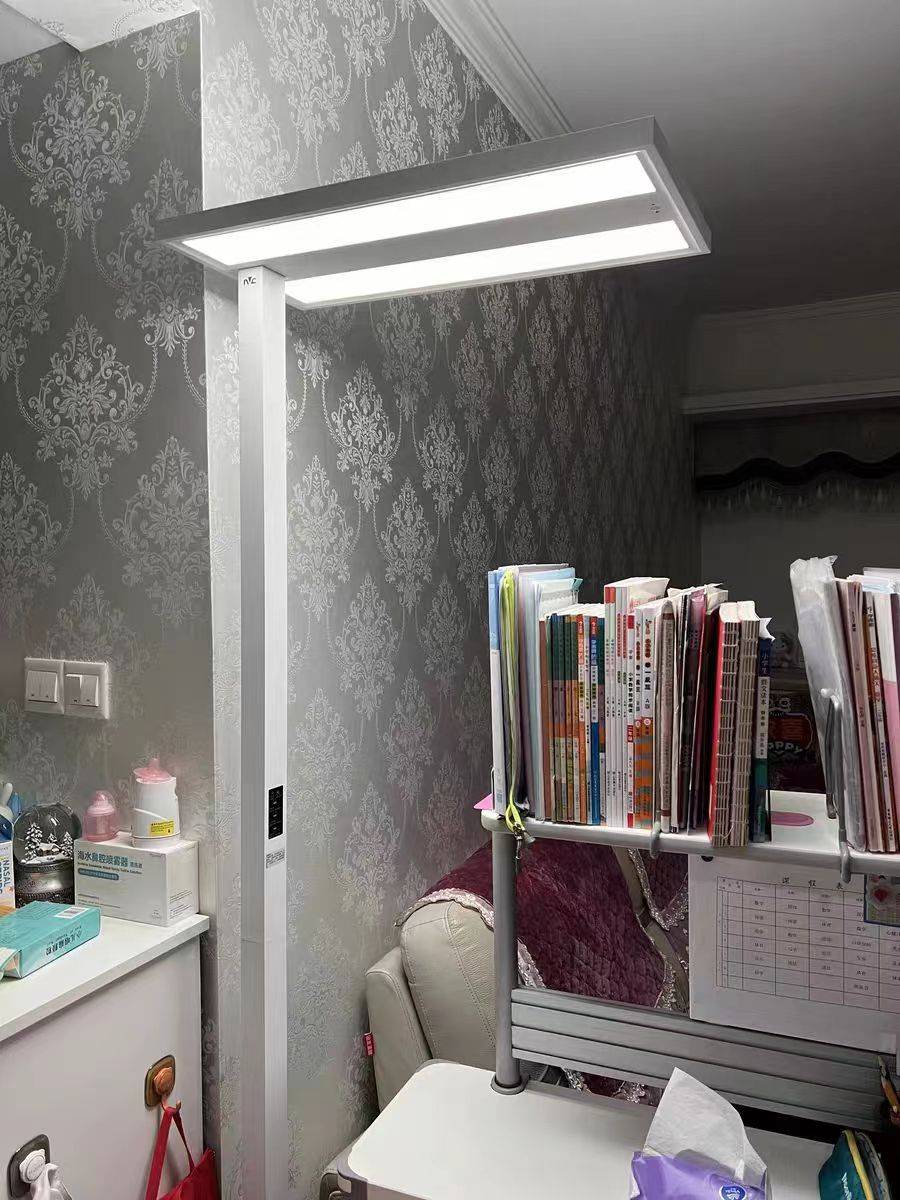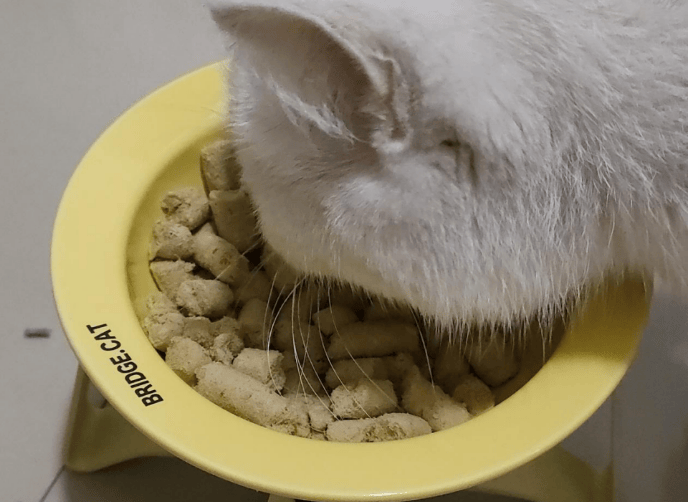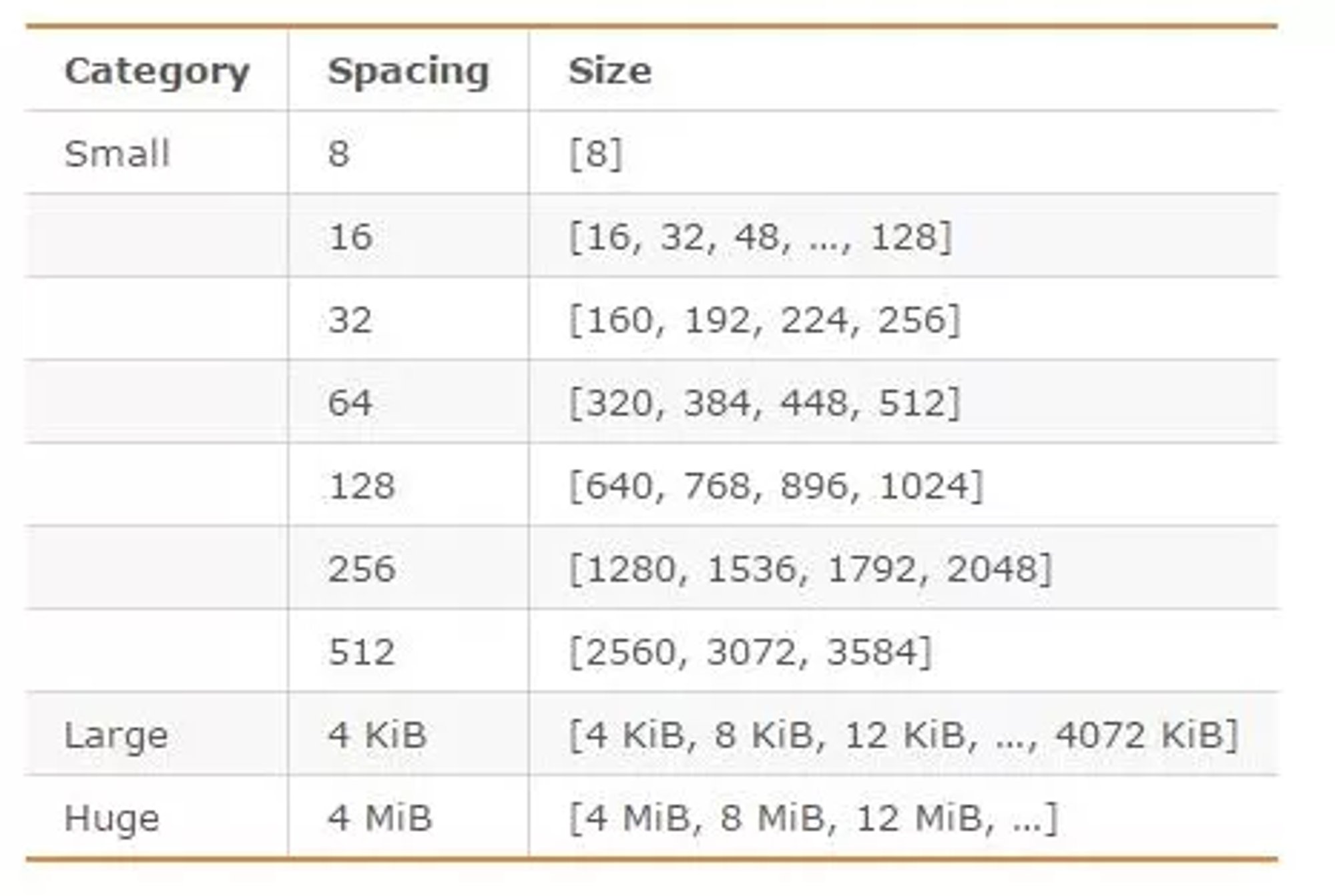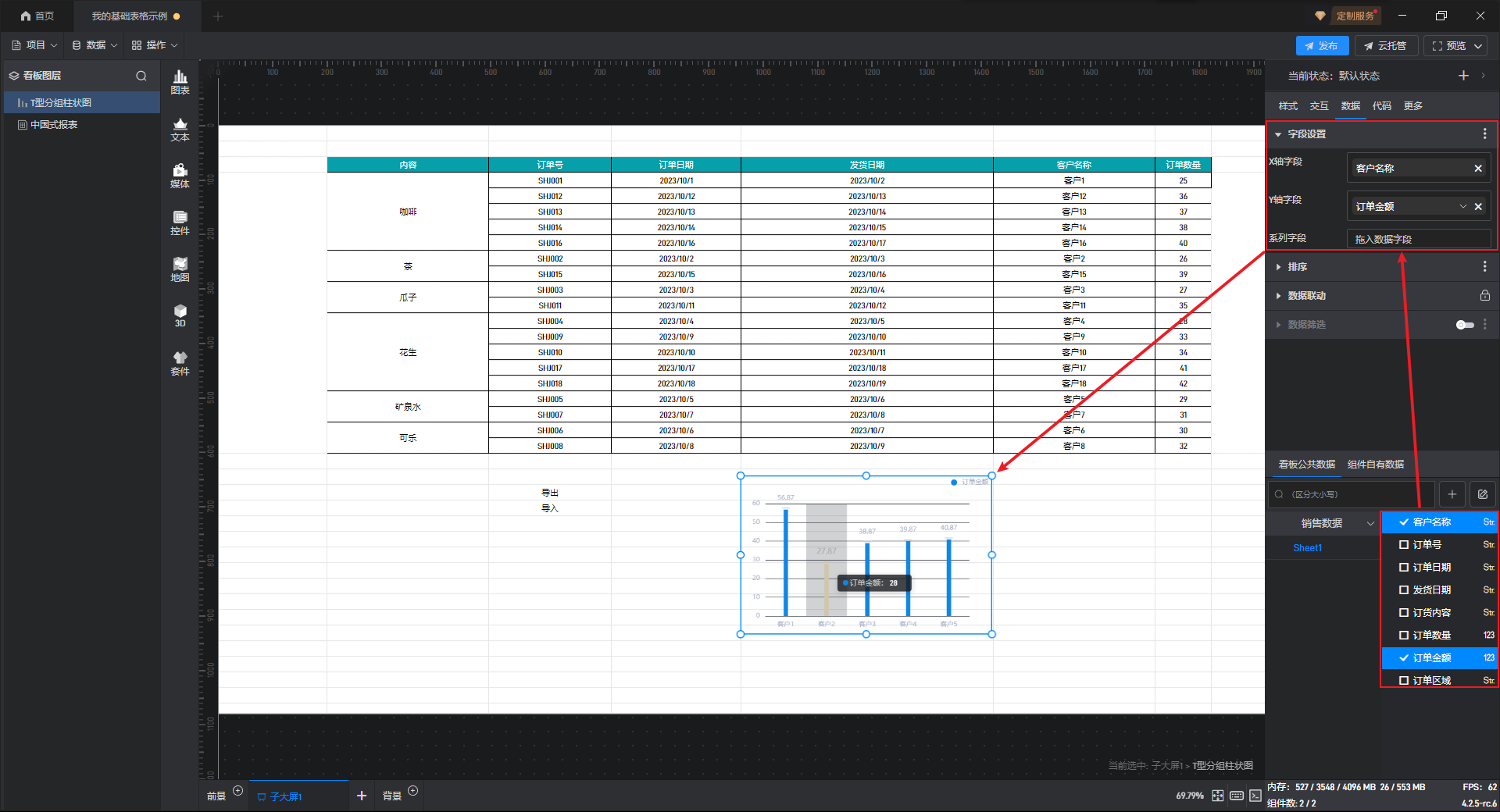摘要:
MindSpore AI框架使用MobileNetv2模型开发垃圾分检代码。检测本地图像中的垃圾物体,保存检测结果到文件。记录了开发过程和步骤,包括环境准备、数据下载、加载和预处理、模型搭建、训练、测试、推理应用等。
1、实验目的
了解垃圾分类应用代码的编写(Python语言);
了解Linux操作系统的基本使用;
掌握atc命令进行模型转换的基本操作。
2、概念
MobileNetv2网络模型原理
Google 2017年提出
用于轻量级CNN网络
移动端
嵌入式或IoT设备
技术采用
使用深度可分离卷积(Depthwise Separable Convolution)
引入宽度系数α和分辨率系数β
倒残差结构(Inverted residual block)
Linear Bottlenecks
优点
减少模型参数
减小运算量
提高模型的准确率,且优化后的模型更小
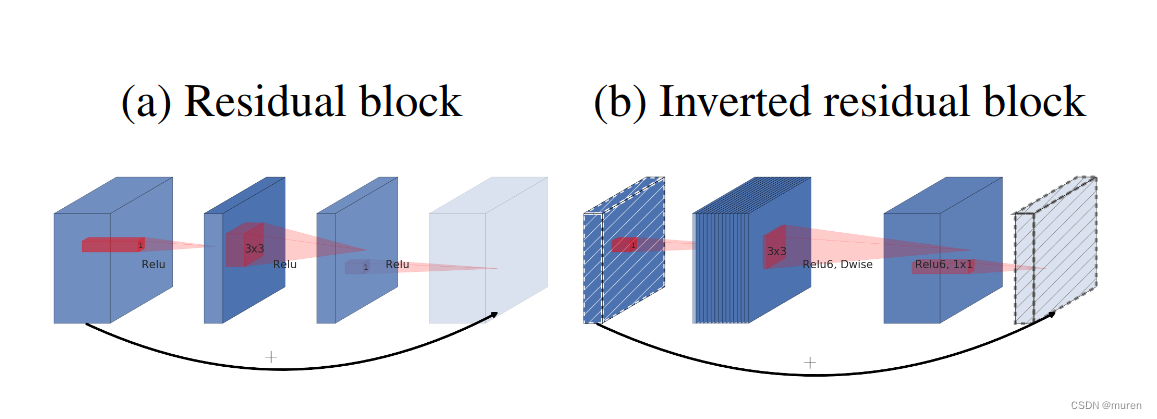
Inverted residual block结构
1x1卷积升维
3x3 DepthWise卷积
1x1卷积降维
Residual block结构
1x1卷积降维
3x3卷积
1x1卷积升维
3、实验环境
支持win_x86和Linux系统,CPU/GPU/Ascend均可
参考《MindSpore环境搭建实验手册》
%%capture captured_output
# 实验环境已经预装了mindspore==2.2.14,如需更换mindspore版本,可更改下面mindspore的版本号
!pip uninstall mindspore -y
!pip install -i https://pypi.mirrors.ustc.edu.cn/simple mindspore==2.2.14
# 查看当前 mindspore 版本
!pip show mindspore输出:
Name: mindspore
Version: 2.2.14
Summary: MindSpore is a new open source deep learning training/inference framework that could be used for mobile, edge and cloud scenarios.
Home-page: https://www.mindspore.cn
Author: The MindSpore Authors
Author-email: contact@mindspore.cn
License: Apache 2.0
Location: /home/nginx/miniconda/envs/jupyter/lib/python3.9/site-packages
Requires: asttokens, astunparse, numpy, packaging, pillow, protobuf, psutil, scipy
Required-by: mindnlp4、数据处理
4.1数据集格式
ImageFolder格式:每一类图片整理成单独的一个文件夹。
数据集结构:
└─ImageFolder
├─train
│ class1Folder
│ ......
└─evalclass1Folder
......4.2下载数据集
from download import download
# 下载data_en数据集
url = "https://ascend-professional-construction-dataset.obs.cn-north-4.myhuaweicloud.com:443/MindStudio-pc/data_en.zip"
path = download(url, "./", kind="zip", replace=True)输出:
Downloading data from https://ascend-professional-construction-dataset.obs.cn-north-4.myhuaweicloud.com:443/MindStudio-pc/data_en.zip (21.3 MB)file_sizes: 100%|███████████████████████████| 22.4M/22.4M [00:00<00:00, 123MB/s]
Extracting zip file...
Successfully downloaded / unzipped to ./4.3下载训练权重文件
from download import download
# 下载预训练权重文件
url = "https://ascend-professional-construction-dataset.obs.cn-north-4.myhuaweicloud.com:443/ComputerVision/mobilenetV2-200_1067.zip"
path = download(url, "./", kind="zip", replace=True)输出:
Downloading data from https://ascend-professional-construction-dataset.obs.cn-north-4.myhuaweicloud.com:443/ComputerVision/mobilenetV2-200_1067.zip (25.5 MB)file_sizes: 100%|███████████████████████████| 26.7M/26.7M [00:00<00:00, 109MB/s]
Extracting zip file...
Successfully downloaded / unzipped to ./4.4数据加载
将模块导入,具体如下:
import math
import numpy as np
import os
import random
from matplotlib import pyplot as plt
from easydict import EasyDict
from PIL import Image
import numpy as np
import mindspore.nn as nn
from mindspore import ops as P
from mindspore.ops import add
from mindspore import Tensor
import mindspore.common.dtype as mstype
import mindspore.dataset as de
import mindspore.dataset.vision as C
import mindspore.dataset.transforms as C2
import mindspore as ms
from mindspore import set_context, nn, Tensor, load_checkpoint, save_checkpoint, export
from mindspore.train import Model
from mindspore.train import Callback, LossMonitor, ModelCheckpoint, CheckpointConfig
os.environ['GLOG_v'] = '3' # Log level includes 3(ERROR), 2(WARNING), 1(INFO), 0(DEBUG).
os.environ['GLOG_logtostderr'] = '0' # 0:输出到文件,1:输出到屏幕
os.environ['GLOG_log_dir'] = '../../log' # 日志目录
os.environ['GLOG_stderrthreshold'] = '2' # 输出到目录也输出到屏幕:3(ERROR), 2(WARNING), 1(INFO), 0(DEBUG).
set_context(mode=ms.GRAPH_MODE, device_target="CPU", device_id=0) # 设置采用图模式执行,设备为Ascend#配置后续训练、验证、推理用到的参数:
# 垃圾分类数据集标签,以及用于标签映射的字典。
garbage_classes = {'干垃圾': ['贝壳', '打火机', '旧镜子', '扫把', '陶瓷碗', '牙刷', '一次性筷子', '脏污衣服'],'可回收物': ['报纸', '玻璃制品', '篮球', '塑料瓶', '硬纸板', '玻璃瓶', '金属制品', '帽子', '易拉罐', '纸张'],'湿垃圾': ['菜叶', '橙皮', '蛋壳', '香蕉皮'],'有害垃圾': ['电池', '药片胶囊', '荧光灯', '油漆桶']
}
class_cn = ['贝壳', '打火机', '旧镜子', '扫把', '陶瓷碗', '牙刷', '一次性筷子', '脏污衣服','报纸', '玻璃制品', '篮球', '塑料瓶', '硬纸板', '玻璃瓶', '金属制品', '帽子', '易拉罐', '纸张','菜叶', '橙皮', '蛋壳', '香蕉皮','电池', '药片胶囊', '荧光灯', '油漆桶']
class_en = ['Seashell', 'Lighter','Old Mirror', 'Broom','Ceramic Bowl', 'Toothbrush','Disposable Chopsticks','Dirty Cloth','Newspaper', 'Glassware', 'Basketball', 'Plastic Bottle', 'Cardboard','Glass Bottle', 'Metalware', 'Hats', 'Cans', 'Paper','Vegetable Leaf','Orange Peel', 'Eggshell','Banana Peel','Battery', 'Tablet capsules','Fluorescent lamp', 'Paint bucket']
index_en = {'Seashell': 0, 'Lighter': 1, 'Old Mirror': 2, 'Broom': 3, 'Ceramic Bowl': 4, 'Toothbrush': 5, 'Disposable Chopsticks': 6, 'Dirty Cloth': 7,'Newspaper': 8, 'Glassware': 9, 'Basketball': 10, 'Plastic Bottle': 11, 'Cardboard': 12, 'Glass Bottle': 13, 'Metalware': 14, 'Hats': 15, 'Cans': 16, 'Paper': 17,'Vegetable Leaf': 18, 'Orange Peel': 19, 'Eggshell': 20, 'Banana Peel': 21,'Battery': 22, 'Tablet capsules': 23, 'Fluorescent lamp': 24, 'Paint bucket': 25}
# 训练超参
config = EasyDict({"num_classes": 26,"image_height": 224,"image_width": 224,#"data_split": [0.9, 0.1],"backbone_out_channels":1280,"batch_size": 16,"eval_batch_size": 8,"epochs": 10,"lr_max": 0.05,"momentum": 0.9,"weight_decay": 1e-4,"save_ckpt_epochs": 1,"dataset_path": "./data_en","class_index": index_en,"pretrained_ckpt": "./mobilenetV2-200_1067.ckpt" # mobilenetV2-200_1067.ckpt
})4.5数据预处理操作
读取垃圾分类数据集
ImageFolderDataset方法
指定训练集和测试集
预处理
归一化
修改图像频道
训练集增加丰富度
RandomCropDecodeResize
RandomHorizontalFlip
RandomColorAdjust
Shuffle
测试集
Decode
Resize
CenterCrop
def create_dataset(dataset_path, config, training=True, buffer_size=1000):"""create a train or eval dataset
Args:dataset_path(string): the path of dataset.config(struct): the config of train and eval in diffirent platform.
Returns:train_dataset, val_dataset"""data_path = os.path.join(dataset_path, 'train' if training else 'test')ds = de.ImageFolderDataset(data_path, num_parallel_workers=4, class_indexing=config.class_index)resize_height = config.image_heightresize_width = config.image_widthnormalize_op = C.Normalize(mean=[0.485*255, 0.456*255, 0.406*255], std=[0.229*255, 0.224*255, 0.225*255])change_swap_op = C.HWC2CHW()type_cast_op = C2.TypeCast(mstype.int32)
if training:crop_decode_resize = C.RandomCropDecodeResize(resize_height, scale=(0.08, 1.0), ratio=(0.75, 1.333))horizontal_flip_op = C.RandomHorizontalFlip(prob=0.5)color_adjust = C.RandomColorAdjust(brightness=0.4, contrast=0.4, saturation=0.4)train_trans = [crop_decode_resize, horizontal_flip_op, color_adjust, normalize_op, change_swap_op]train_ds = ds.map(input_columns="image", operations=train_trans, num_parallel_workers=4)train_ds = train_ds.map(input_columns="label", operations=type_cast_op, num_parallel_workers=4)train_ds = train_ds.shuffle(buffer_size=buffer_size)ds = train_ds.batch(config.batch_size, drop_remainder=True)else:decode_op = C.Decode()resize_op = C.Resize((int(resize_width/0.875), int(resize_width/0.875)))center_crop = C.CenterCrop(resize_width)eval_trans = [decode_op, resize_op, center_crop, normalize_op, change_swap_op]eval_ds = ds.map(input_columns="image", operations=eval_trans, num_parallel_workers=4)eval_ds = eval_ds.map(input_columns="label", operations=type_cast_op, num_parallel_workers=4)ds = eval_ds.batch(config.eval_batch_size, drop_remainder=True)
return ds展示部分处理后的数据:
ds = create_dataset(dataset_path=config.dataset_path, config=config, training=False)
print(ds.get_dataset_size())
data = ds.create_dict_iterator(output_numpy=True)._get_next()
images = data['image']
labels = data['label']
for i in range(1, 5):plt.subplot(2, 2, i)plt.imshow(np.transpose(images[i], (1,2,0)))plt.title('label: %s' % class_en[labels[i]])plt.xticks([])
plt.show()输出:
Clipping input data to the valid range for imshow with RGB data ([0..1] for floats or [0..255] for integers). Got range [-1.9831933..2.64].
Clipping input data to the valid range for imshow with RGB data ([0..1] for floats or [0..255] for integers). Got range [-2.117904..2.4285715].
Clipping input data to the valid range for imshow with RGB data ([0..1] for floats or [0..255] for integers). Got range [-2.0494049..2.273987].
Clipping input data to the valid range for imshow with RGB data ([0..1] for floats or [0..255] for integers). Got range [-1.9809059..2.64].
32
5、MobileNetV2模型搭建
定义MobileNetV2网络
继承mindspore.nn.Cell(基类)
__init__方法 定义神经网络的各层
Construct 构造方法
ReLU6 原始模型激活函数
池化模块 全局平均池化层
__all__ = ['MobileNetV2', 'MobileNetV2Backbone', 'MobileNetV2Head', 'mobilenet_v2']
def _make_divisible(v, divisor, min_value=None):if min_value is None:min_value = divisornew_v = max(min_value, int(v + divisor / 2) // divisor * divisor)if new_v < 0.9 * v:new_v += divisorreturn new_v
class GlobalAvgPooling(nn.Cell):"""Global avg pooling definition.
Args:
Returns:Tensor, output tensor.
Examples:>>> GlobalAvgPooling()"""
def __init__(self):super(GlobalAvgPooling, self).__init__()
def construct(self, x):x = P.mean(x, (2, 3))return x
class ConvBNReLU(nn.Cell):"""Convolution/Depthwise fused with Batchnorm and ReLU block definition.
Args:in_planes (int): Input channel.out_planes (int): Output channel.kernel_size (int): Input kernel size.stride (int): Stride size for the first convolutional layer. Default: 1.groups (int): channel group. Convolution is 1 while Depthiwse is input channel. Default: 1.
Returns:Tensor, output tensor.
Examples:>>> ConvBNReLU(16, 256, kernel_size=1, stride=1, groups=1)"""
def __init__(self, in_planes, out_planes, kernel_size=3, stride=1, groups=1):super(ConvBNReLU, self).__init__()padding = (kernel_size - 1) // 2in_channels = in_planesout_channels = out_planesif groups == 1:conv = nn.Conv2d(in_channels, out_channels, kernel_size, stride,
pad_mode='pad', padding=padding)else:out_channels = in_planesconv = nn.Conv2d(in_channels, out_channels, kernel_size, stride, pad_mode='pad',padding=padding, group=in_channels)
layers = [conv, nn.BatchNorm2d(out_planes), nn.ReLU6()]self.features = nn.SequentialCell(layers)
def construct(self, x):output = self.features(x)return output
class InvertedResidual(nn.Cell):"""Mobilenetv2 residual block definition.
Args:inp (int): Input channel.oup (int): Output channel.stride (int): Stride size for the first convolutional layer. Default: 1.expand_ratio (int): expand ration of input channel
Returns:Tensor, output tensor.
Examples:>>> ResidualBlock(3, 256, 1, 1)"""
def __init__(self, inp, oup, stride, expand_ratio):super(InvertedResidual, self).__init__()assert stride in [1, 2]
hidden_dim = int(round(inp * expand_ratio))self.use_res_connect = stride == 1 and inp == oup
layers = []if expand_ratio != 1:layers.append(ConvBNReLU(inp, hidden_dim, kernel_size=1))layers.extend([ConvBNReLU(hidden_dim, hidden_dim,stride=stride, groups=hidden_dim),nn.Conv2d(hidden_dim, oup, kernel_size=1,stride=1, has_bias=False),nn.BatchNorm2d(oup),])self.conv = nn.SequentialCell(layers)self.cast = P.Cast()
def construct(self, x):identity = xx = self.conv(x)if self.use_res_connect:return P.add(identity, x)return x
class MobileNetV2Backbone(nn.Cell):"""MobileNetV2 architecture.
Args:class_num (int): number of classes.width_mult (int): Channels multiplier for round to 8/16 and others. Default is 1.has_dropout (bool): Is dropout used. Default is falseinverted_residual_setting (list): Inverted residual settings. Default is Noneround_nearest (list): Channel round to . Default is 8Returns:Tensor, output tensor.
Examples:>>> MobileNetV2(num_classes=1000)"""
def __init__(self, width_mult=1., inverted_residual_setting=None, round_nearest=8,input_channel=32, last_channel=1280):super(MobileNetV2Backbone, self).__init__()block = InvertedResidual# setting of inverted residual blocksself.cfgs = inverted_residual_settingif inverted_residual_setting is None:self.cfgs = [# t, c, n, s[1, 16, 1, 1],[6, 24, 2, 2],[6, 32, 3, 2],[6, 64, 4, 2],[6, 96, 3, 1],[6, 160, 3, 2],[6, 320, 1, 1],]
# building first layerinput_channel = _make_divisible(input_channel * width_mult, round_nearest)self.out_channels = _make_divisible(last_channel * max(1.0, width_mult), round_nearest)features = [ConvBNReLU(3, input_channel, stride=2)]# building inverted residual blocksfor t, c, n, s in self.cfgs:output_channel = _make_divisible(c * width_mult, round_nearest)for i in range(n):stride = s if i == 0 else 1features.append(block(input_channel, output_channel, stride, expand_ratio=t))input_channel = output_channelfeatures.append(ConvBNReLU(input_channel, self.out_channels, kernel_size=1))self.features = nn.SequentialCell(features)self._initialize_weights()
def construct(self, x):x = self.features(x)return x
def _initialize_weights(self):"""Initialize weights.
Args:
Returns:None.
Examples:>>> _initialize_weights()"""self.init_parameters_data()for _, m in self.cells_and_names():if isinstance(m, nn.Conv2d):n = m.kernel_size[0] * m.kernel_size[1] * m.out_channelsm.weight.set_data(Tensor(np.random.normal(0, np.sqrt(2. / n),m.weight.data.shape).astype("float32")))if m.bias is not None:m.bias.set_data(Tensor(np.zeros(m.bias.data.shape, dtype="float32")))elif isinstance(m, nn.BatchNorm2d):m.gamma.set_data(Tensor(np.ones(m.gamma.data.shape, dtype="float32")))m.beta.set_data(Tensor(np.zeros(m.beta.data.shape, dtype="float32")))
@propertydef get_features(self):return self.features
class MobileNetV2Head(nn.Cell):"""MobileNetV2 architecture.
Args:class_num (int): Number of classes. Default is 1000.has_dropout (bool): Is dropout used. Default is falseReturns:Tensor, output tensor.
Examples:>>> MobileNetV2(num_classes=1000)"""
def __init__(self, input_channel=1280, num_classes=1000,
has_dropout=False, activation="None"):super(MobileNetV2Head, self).__init__()# mobilenet headhead = ([GlobalAvgPooling(), nn.Dense(input_channel, num_classes, has_bias=True)]
if not has_dropout else[GlobalAvgPooling(), nn.Dropout(0.2), nn.Dense(input_channel, num_classes, has_bias=True)])self.head = nn.SequentialCell(head)self.need_activation = Trueif activation == "Sigmoid":self.activation = nn.Sigmoid()elif activation == "Softmax":self.activation = nn.Softmax()else:self.need_activation = Falseself._initialize_weights()
def construct(self, x):x = self.head(x)if self.need_activation:x = self.activation(x)return x
def _initialize_weights(self):"""Initialize weights.
Args:
Returns:None.
Examples:>>> _initialize_weights()"""self.init_parameters_data()for _, m in self.cells_and_names():if isinstance(m, nn.Dense):m.weight.set_data(Tensor(np.random.normal(0, 0.01, m.weight.data.shape).astype("float32")))if m.bias is not None:m.bias.set_data(Tensor(np.zeros(m.bias.data.shape, dtype="float32")))@propertydef get_head(self):return self.head
class MobileNetV2(nn.Cell):"""MobileNetV2 architecture.
Args:class_num (int): number of classes.width_mult (int): Channels multiplier for round to 8/16 and others. Default is 1.has_dropout (bool): Is dropout used. Default is falseinverted_residual_setting (list): Inverted residual settings. Default is Noneround_nearest (list): Channel round to . Default is 8Returns:Tensor, output tensor.
Examples:>>> MobileNetV2(backbone, head)"""
def __init__(self, num_classes=1000, width_mult=1., has_dropout=False, inverted_residual_setting=None, \round_nearest=8, input_channel=32, last_channel=1280):super(MobileNetV2, self).__init__()self.backbone = MobileNetV2Backbone(width_mult=width_mult, \inverted_residual_setting=inverted_residual_setting, \round_nearest=round_nearest, input_channel=input_channel, \
last_channel=last_channel).get_featuresself.head = MobileNetV2Head(input_channel=self.backbone.out_channel, \
num_classes=num_classes, \
has_dropout=has_dropout).get_head
def construct(self, x):x = self.backbone(x)x = self.head(x)return x
class MobileNetV2Combine(nn.Cell):"""MobileNetV2Combine architecture.
Args:backbone (Cell): the features extract layers.head (Cell): the fully connected layers.Returns:Tensor, output tensor.
Examples:>>> MobileNetV2(num_classes=1000)"""
def __init__(self, backbone, head):super(MobileNetV2Combine, self).__init__(auto_prefix=False)self.backbone = backboneself.head = head
def construct(self, x):x = self.backbone(x)x = self.head(x)return x
def mobilenet_v2(backbone, head):return MobileNetV2Combine(backbone, head)6、MobileNetV2模型的训练与测试
6.1训练策略
静态学习率,如0.01。
随着训练步数的增加,模型逐渐收敛,逐渐降低权重参数的更新幅度,减小模型训练抖动。
动态下降学习率常见策略:
polynomial decay/square decay;
cosine decay,此例选用;
exponential decay;
stage decay.
def cosine_decay(total_steps, lr_init=0.0, lr_end=0.0, lr_max=0.1, warmup_steps=0):"""Applies cosine decay to generate learning rate array.
Args:total_steps(int): all steps in training.lr_init(float): init learning rate.lr_end(float): end learning ratelr_max(float): max learning rate.warmup_steps(int): all steps in warmup epochs.
Returns:list, learning rate array."""lr_init, lr_end, lr_max = float(lr_init), float(lr_end), float(lr_max)decay_steps = total_steps - warmup_stepslr_all_steps = []inc_per_step = (lr_max - lr_init) / warmup_steps if warmup_steps else 0for i in range(total_steps):if i < warmup_steps:lr = lr_init + inc_per_step * (i + 1)else:cosine_decay = 0.5 * (1 + math.cos(math.pi * (i - warmup_steps) / decay_steps))lr = (lr_max - lr_end) * cosine_decay + lr_endlr_all_steps.append(lr)
return lr_all_steps6.2保存训练模型
模型训练过程中添加检查点(Checkpoint)保存模型参数。
保存模型使用场景:
训练后推理场景
用于后续的推理或预测操作。
保存实时验证精度最高的模型参数用于预测操作。
再训练场景
长时间训练,断点处继续训练。
Fine-tuning微调场景
微调用于其他类似任务的模型训练。
下例加载ImageNet数据上预训练的MobileNetv2进行Fine-tuning
只训练最后修改的FC层
训练过程中保存Checkpoint
def switch_precision(net, data_type):if ms.get_context('device_target') == "Ascend":net.to_float(data_type)for _, cell in net.cells_and_names():if isinstance(cell, nn.Dense):cell.to_float(ms.float32)6.3模型训练与测试
训练之前
定义训练函数
读取数据并对模型进行实例化,
定义优化器和损失函数
概念:
损失函数(目标函数)
衡量预测值与实际值的差异程度。
深度学习通过迭代缩小损失函数的值,提高模型性能。
优化器
最小化损失函数,在训练过程中改进模型。
损失函数关于权重的梯度
指示优化器优化方向
参数更新
固定MobileNetV2Backbone层参数,训练中不更新
只更新MobileNetV2Head模块参数
MindSpore损失函数
SoftmaxCrossEntropyWithLogits,此例选用
L1Loss
MSELoss
训练测试过程中打印loss值,总体趋势逐步减小,精度逐步提高。
每一轮epoch模型会计算测试精度,不断提升MobileNetV2模型的预测能力
from mindspore.amp import FixedLossScaleManager
import time
LOSS_SCALE = 1024
train_dataset = create_dataset(dataset_path=config.dataset_path, config=config)
eval_dataset = create_dataset(dataset_path=config.dataset_path, config=config)
step_size = train_dataset.get_dataset_size()backbone = MobileNetV2Backbone() #last_channel=config.backbone_out_channels
# Freeze parameters of backbone. You can comment these two lines.
for param in backbone.get_parameters():param.requires_grad = False
# load parameters from pretrained model
load_checkpoint(config.pretrained_ckpt, backbone)
head = MobileNetV2Head(input_channel=backbone.out_channels, num_classes=config.num_classes)
network = mobilenet_v2(backbone, head)
# define loss, optimizer, and model
loss = nn.SoftmaxCrossEntropyWithLogits(sparse=True, reduction='mean')
loss_scale = FixedLossScaleManager(LOSS_SCALE, drop_overflow_update=False)
lrs = cosine_decay(config.epochs * step_size, lr_max=config.lr_max)
opt = nn.Momentum(network.trainable_params(), lrs, config.momentum, config.weight_decay, loss_scale=LOSS_SCALE)
# 定义用于训练的train_loop函数。
def train_loop(model, dataset, loss_fn, optimizer):# 定义正向计算函数def forward_fn(data, label):logits = model(data)loss = loss_fn(logits, label)return loss
# 定义微分函数,使用mindspore.value_and_grad获得微分函数grad_fn,输出loss和梯度。# 由于是对模型参数求导,grad_position 配置为None,传入可训练参数。grad_fn = ms.value_and_grad(forward_fn, None, optimizer.parameters)
# 定义 one-step training函数def train_step(data, label):loss, grads = grad_fn(data, label)optimizer(grads)return loss
size = dataset.get_dataset_size()model.set_train()for batch, (data, label) in enumerate(dataset.create_tuple_iterator()):loss = train_step(data, label)
if batch % 10 == 0:loss, current = loss.asnumpy(), batchprint(f"loss: {loss:>7f} [{current:>3d}/{size:>3d}]")
# 定义用于测试的test_loop函数。
def test_loop(model, dataset, loss_fn):num_batches = dataset.get_dataset_size()model.set_train(False)total, test_loss, correct = 0, 0, 0for data, label in dataset.create_tuple_iterator():pred = model(data)total += len(data)test_loss += loss_fn(pred, label).asnumpy()correct += (pred.argmax(1) == label).asnumpy().sum()test_loss /= num_batchescorrect /= totalprint(f"Test: \n Accuracy: {(100*correct):>0.1f}%, Avg loss: {test_loss:>8f} \n")
print("============== Starting Training ==============")
# 由于时间问题,训练过程只进行了2个epoch ,可以根据需求调整。
epoch_begin_time = time.time()
epochs = 2
for t in range(epochs):begin_time = time.time()print(f"Epoch {t+1}\n-------------------------------")train_loop(network, train_dataset, loss, opt)ms.save_checkpoint(network, "save_mobilenetV2_model.ckpt")end_time = time.time()times = end_time - begin_timeprint(f"per epoch time: {times}s")test_loop(network, eval_dataset, loss)
epoch_end_time = time.time()
times = epoch_end_time - epoch_begin_time
print(f"total time: {times}s")
print("============== Training Success ==============")输出:
============== Starting Training ==============
Epoch 1
-------------------------------
[ERROR] CORE(185595,ffff82d60930,python):2024-06-07-01:11:59.680.056 [mindspore/core/utils/file_utils.cc:253] GetRealPath] Get realpath failed, path[/tmp/ipykernel_185595/1438112663.py]
[ERROR] CORE(185595,ffff82d60930,python):2024-06-07-01:11:59.680.141 [mindspore/core/utils/file_utils.cc:253] GetRealPath] Get realpath failed, path[/tmp/ipykernel_185595/1438112663.py]
[ERROR] CORE(185595,ffff82d60930,python):2024-06-07-01:11:59.680.195 [mindspore/core/utils/file_utils.cc:253] GetRealPath] Get realpath failed, path[/tmp/ipykernel_185595/1438112663.py]
loss: 3.241972 [ 0/162]
loss: 3.257221 [ 10/162]
loss: 3.279036 [ 20/162]
loss: 3.319016 [ 30/162]
loss: 3.203032 [ 40/162]
loss: 3.281466 [ 50/162]
loss: 3.279725 [ 60/162]
loss: 3.229515 [ 70/162]
loss: 3.267290 [ 80/162]
loss: 3.188127 [ 90/162]
loss: 3.212995 [100/162]
loss: 3.241497 [110/162]
loss: 3.209007 [120/162]
loss: 3.172501 [130/162]
loss: 3.197280 [140/162]
loss: 3.272911 [150/162]
loss: 3.216317 [160/162]
per epoch time: 76.58693552017212s
[ERROR] CORE(185595,ffff82d60930,python):2024-06-07-01:13:15.037.060 [mindspore/core/utils/file_utils.cc:253] GetRealPath] Get realpath failed, path[/tmp/ipykernel_185595/3136751602.py]
[ERROR] CORE(185595,ffff82d60930,python):2024-06-07-01:13:15.037.167 [mindspore/core/utils/file_utils.cc:253] GetRealPath] Get realpath failed, path[/tmp/ipykernel_185595/3136751602.py]
Test: Accuracy: 8.0%, Avg loss: 3.194478 Epoch 2
-------------------------------
[ERROR] CORE(185595,ffff82d60930,python):2024-06-07-01:14:30.208.773 [mindspore/core/utils/file_utils.cc:253] GetRealPath] Get realpath failed, path[/tmp/ipykernel_185595/1438112663.py]
[ERROR] CORE(185595,ffff82d60930,python):2024-06-07-01:14:30.208.853 [mindspore/core/utils/file_utils.cc:253] GetRealPath] Get realpath failed, path[/tmp/ipykernel_185595/1438112663.py]
[ERROR] CORE(185595,ffff82d60930,python):2024-06-07-01:14:30.208.907 [mindspore/core/utils/file_utils.cc:253] GetRealPath] Get realpath failed, path[/tmp/ipykernel_185595/1438112663.py]
loss: 3.188095 [ 0/162]
loss: 3.165776 [ 10/162]
loss: 3.191228 [ 20/162]
loss: 3.138081 [ 30/162]
loss: 3.074074 [ 40/162]
loss: 3.163727 [ 50/162]
loss: 3.165467 [ 60/162]
loss: 3.173247 [ 70/162]
loss: 3.159379 [ 80/162]
loss: 3.143544 [ 90/162]
loss: 3.200886 [100/162]
loss: 3.201387 [110/162]
loss: 3.165534 [120/162]
loss: 3.171612 [130/162]
loss: 3.203765 [140/162]
loss: 3.166876 [150/162]
loss: 3.125233 [160/162]
per epoch time: 76.00073027610779s
Test: Accuracy: 17.4%, Avg loss: 3.111141 total time: 295.01550674438477s
============== Training Success ==============7、模型推理
加载模型Checkpoint
load_checkpoint接口加载数据
把数据传入给原始网络
CKPT="save_mobilenetV2_model.ckpt"
[13]:def image_process(image):"""Precess one image per time.Args:image: shape (H, W, C)"""mean=[0.485*255, 0.456*255, 0.406*255]std=[0.229*255, 0.224*255, 0.225*255]image = (np.array(image) - mean) / stdimage = image.transpose((2,0,1))img_tensor = Tensor(np.array([image], np.float32))return img_tensor
def infer_one(network, image_path):image = Image.open(image_path).resize((config.image_height, config.image_width))logits = network(image_process(image))pred = np.argmax(logits.asnumpy(), axis=1)[0]print(image_path, class_en[pred])
def infer():backbone = MobileNetV2Backbone(last_channel=config.backbone_out_channels)head = MobileNetV2Head(input_channel=backbone.out_channels, num_classes=config.num_classes)network = mobilenet_v2(backbone, head)load_checkpoint(CKPT, network)for i in range(91, 100):infer_one(network, f'data_en/test/Cardboard/000{i}.jpg')
infer()输出:
[ERROR] CORE(185595,ffff82d60930,python):2024-06-07-01:16:53.811.718 [mindspore/core/utils/file_utils.cc:253] GetRealPath] Get realpath failed, path[/tmp/ipykernel_185595/3136751602.py]
[ERROR] CORE(185595,ffff82d60930,python):2024-06-07-01:16:53.811.810 [mindspore/core/utils/file_utils.cc:253] GetRealPath] Get realpath failed, path[/tmp/ipykernel_185595/3136751602.py]
data_en/test/Cardboard/00091.jpg Lighter
data_en/test/Cardboard/00092.jpg Broom
data_en/test/Cardboard/00093.jpg Basketball
data_en/test/Cardboard/00094.jpg Basketball
data_en/test/Cardboard/00095.jpg Basketball
data_en/test/Cardboard/00096.jpg Glassware
data_en/test/Cardboard/00097.jpg Lighter
data_en/test/Cardboard/00098.jpg Basketball
data_en/test/Cardboard/00099.jpg Basketball8、导出AIR/GEIR/ONNX模型文件
导出AIR模型文件,用于后续Atlas 200 DK上的模型转换与推理。
当前仅支持MindSpore+Ascend环境。
backbone = MobileNetV2Backbone(last_channel=config.backbone_out_channels)
head = MobileNetV2Head(input_channel=backbone.out_channels, num_classes=config.num_classes)
network = mobilenet_v2(backbone, head)
load_checkpoint(CKPT, network)
input = np.random.uniform(0.0, 1.0, size=[1, 3, 224, 224]).astype(np.float32)
# export(network, Tensor(input), file_name='mobilenetv2.air', file_format='AIR')
# export(network, Tensor(input), file_name='mobilenetv2.pb', file_format='GEIR')
export(network, Tensor(input), file_name='mobilenetv2.onnx', file_format='ONNX')

